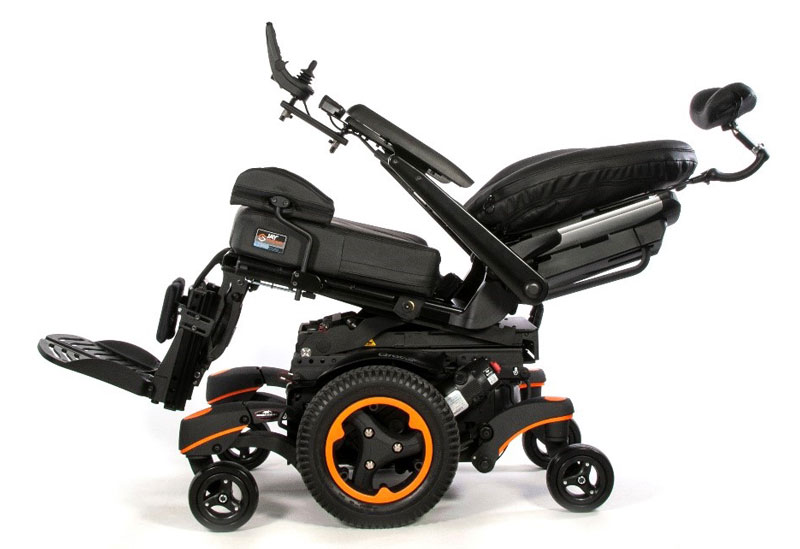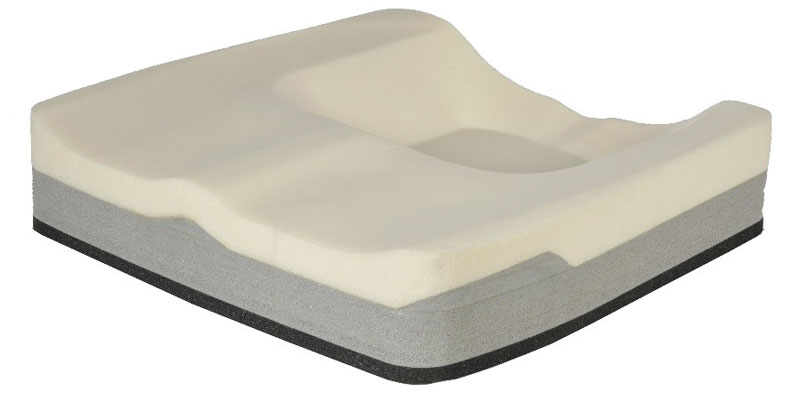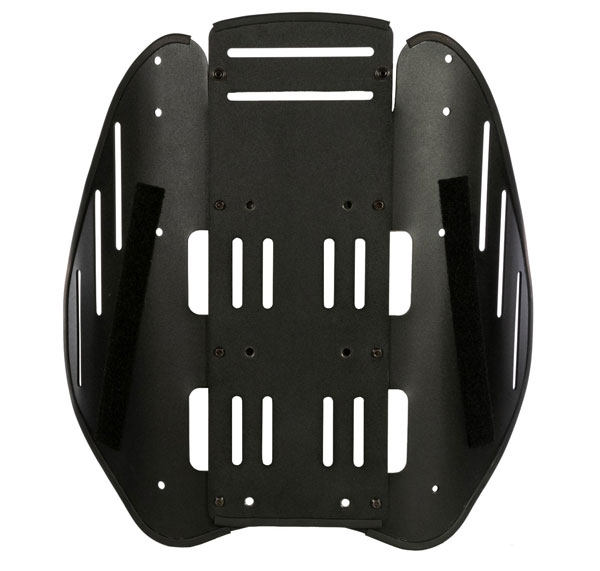One of the first elements of the wheelchair service provision process outlined by the Rehabilitation Engineering and Assistive Technology Society of North America (RESNA) is to determine the goals of both the client and the clinical team (Arledge, et al., 2011). Unfortunately, sometimes providing equipment to meet one goal may interfere with achieving another goal. An example of this is providing pelvic stability for function when providing recline. Two common phrases/concepts we often use when recommending seating and wheeled mobility equipment are: "it all starts with the pelvis" and "pelvic stability for distal stability." Essentially we encourage a stable, neutral pelvis to optimize positioning and function. However, when an individual uses recline, the pelvis often moves out of position which can impact overall positioning and function. In this blog post we are going to take a closer look at recline and review some solutions for addressing the potentially negative impacts of this power seat function (PSF).
Power Recline Overview
Power recline is a PSF which is commonly recommended for an individual to provide alternative positioning. Recline may be used for pressure relief and distribution, decrease fatigue, increase comfort/sitting tolerance, bladder management, muscle tone management, supine transfers, or be brought forward for an activity ready position (Dicianno, et al., 2015). In addition to pressure distribution, the use of recline can be utilized to decrease the potential of a client developing contractures from being in a seated position for long lengths of time. By reclining the back into a supine position, the trunk and lower extremities are elongated to assist in preventing contractures. While the benefits of recline might be perfect for addressing the needs previously listed, unfortunately, the pelvis does not always remain stable with reclining, so this technology may not always be recommended or used appropriately.

Currently, most pressure reduction programs focus on periodically reducing seating pressure. Pressure reduction can be achieved by using pressure reducing surfaces, pushups, leaning from side to side, and tilting in space. Reclining is another method of reducing pressure. Hobson (1992) looked at alternate positioning as it related to interface pressure and shear forces. He found that reclining the back support to 120° resulted in 12% reduction in interface pressure but with a 25% increase in shear force.
Friction occurs when two forces rub together. When this occurs on the skin, it can result in a superficial, partial thickness skin injury that will look like an abrasion. Friction without shear does not cause a pressure injury. Shearing is friction plus the force of gravity. As the weight of gravity pulls down, skin remains static on the surface, however the bones and connective tissue within continue to slide down within the body. The vessels in between the skin and the bone become compressed, stretched, and/or torn. This causes a lack of blood flow to the tissue leading to ischemia. This is what leads to a full thickness "pressure" injury. Shearing has a significant impact on patient outcomes. Efforts from wheelchair manufacturers have been to reduce the shear forces on the trunk during power reclining by using shear reduction technology so that the surface of the back support stays in contact with the individual's back when it is reclined.
Potential Solutions for Stabilizing the Pelvis
Although recline is a great method of reducing pressure, the pelvis tends to slide forward which may also cause shearing under the ischial tuberosities. Therefore, we need to stabilize the pelvis to prevent it from sliding forward. There are different ways to provide pelvic stability. Secondary supports such as an anterior pelvic support is frequently used to minimize forward migration of the pelvis which could result in a pelvic position that puts the user at risk of pressure injury. An anterior pelvic support or upper thigh support are methods of stabilizing the pelvis and decrease sliding. Other secondary supports include medial knee support to decrease hip adduction, rigid pelvic bars, or anterior knee supports. All of these can prevent further posterior pelvic tilt.
Another means to provide stability is by cushion design. An antithrust seat is one cushion design that is intended to provide pelvic stability. An antithrust seat is designed with a pre-ischial support surface intended to inhibit forward movement of the ischial tuberosities. The newest cushion design to stabilize the pelvis is the Sunrise Medical® JAY® Syncra cushion. The Syncra cushion is designed with a deeper pelvic contour area, thigh troughs, along with a lower rear pelvic wall. This cushion is specifically designed to prevent the pelvis from moving forward and posterior tilting when an individual reclines their back.

As mentioned earlier, utilizing recline can also be beneficial with helping to decrease the formulation of lower extremities contractures. However, when a back is reclined to a fully supine position, there is a tendency for the rear pelvic wall of the cushion to push the pelvis up and not allow the spine to fully relax. By lowering the rear pelvic wall, the Syncra cushion significantly improves the benefits of alternative positioning without impacting overall function, because the pelvis is able to remain in neutral and therefore the spine is aligned during the reclined position. The last thing to consider when it comes to impacting pelvic stability during recline is the posterior contact surface. If the back support is too low, it may push the pelvis forward during recline. However sometimes raising the back support up creates poor alignment of lateral and shoulder height. The design of the back support is critical during recline. Back supports that have a scalloped edge, such as the JAY Syncra back support, provide improved pelvic stability during the recline process.

So when recommending equipment that must meet multiple goals, it is important for the clinician to take into account how one type of technology may impact another. Is one goal more important than another? Is there one technology that can address more than one goal? Can the use of secondary supports or cushion design make the technology more effective? A good rule of thumb when selecting power seat functions is to determine if the seating is impacted in any way. The clinician can then compare the effects of recline on pelvis stability when using different cushions and back supports. This will give the user the best opportunity for pressure relief and optimal function.
References
- Arledge, S., Armstrong, W., Babinec, M., Dicianno, B. E., Digiovine, C., Dyson-Hudson, T., ... Stogner, J. (2011). RESNA Wheelchair service provision guide. S.I.: Distributed by ERIC Clearinghouse.
- Assistive Technology Partners. (2013). Glossary of wheelchair terms and definition (Vol. 1). Denver, Colorado. http://www.ucdenver.edu/
- Dicianno, B. E., Lieberman, J., Schmeler, M. R., Souza, A. E., Cooper, R., Lange, M., ... Jan, Y. (2015). Rehabilitation Engineering and Assistive Technology Society of North America's Position on the Application of Tilt, Recline, and Elevating Legrests for Wheelchairs Literature Update. Assistive Technology, 27(3), 193-198. doi:10.1080/10400435.2015.1066657
- Jan, Y. K., Jones, M. A., Rabadi, M. H., Foreman, R. D., Thiessen, A. Effect of wheelchair tilt-in-space and recline angles on skin perfusion over the ischial tuberosity in people with spinal cord injury. Arch Phys.
- Hobson, D. A. (1992). Comparative effects of posture on pressure and shear at the body-seat interface. J Rehabil Res Dev. 29(4), 21-31.
- Lange, M. (2008). The pelvis: using secondary supports in positioning. Mobility Management. Retrieved from https://mobilitymgmt.com/Articles/2008/07/01/The-Pelvis-Using-Secondary-Supports-in-Positioning.aspx